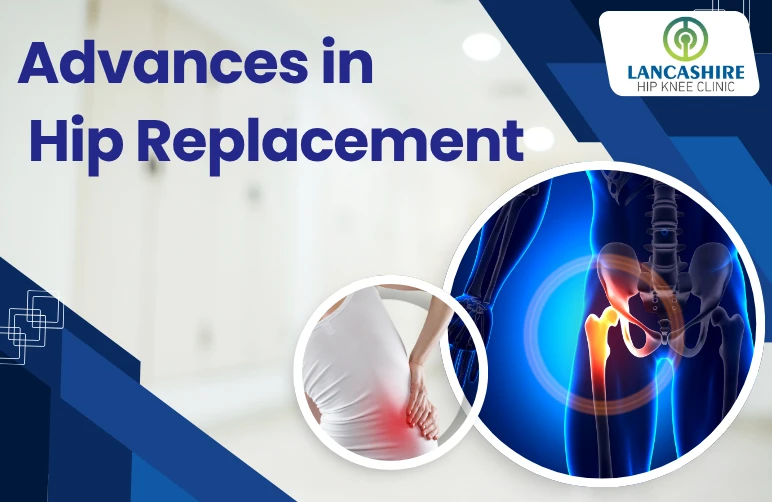Advances in Hip Replacement
Total hip replacement is one of the most successful operations in the history of medicine. Modern day hip replacement surgery has been able to transform the lives of millions of people around the world.
Total hip replacement is typically performed for patients with arthritis of the hip. It can also be performed for patients with hip injury, inflammatory conditions, etc.
Hip replacement surgery has seen significant advancements over the years, improving outcomes and recovery times for patients. Here are some key developments:
- Minimally Invasive Techniques: Surgeons now use smaller incisions and advanced surgical techniques to reduce tissue damage and speed up recovery. This approach often results in less pain and shorter hospital stays. I routinely use this in my practice and find that the post-operative recovery is much less painful with reasonably quick return to normal life.
- Improved Prosthesis: Modern hip implants are made from durable materials like ceramic and metal alloys, which offer better wear resistance and longevity. These materials help reduce the risk of implant failure and the need for revision surgery. Data from joint registries around the world show that the average survivorship of hip replacement is now in excess of 20 years.
- Robotic-Assisted Surgery: The use of robotic systems in hip replacement surgery allows for greater precision in implant placement. This technology helps surgeons achieve optimal alignment and positioning, leading to better functional outcomes.
- Enhanced Rehabilitation Protocols: Advances in rehabilitation techniques and protocols have improved post-surgery recovery. Patients now benefit from tailored exercise programs and physical therapy that promote faster healing and return to normal activities. In my practice, patients are encouraged to mobilize full weight bearing on the day of the surgery and are generally able to walk with walking aids as well as manage stairs from the next day.
- Pain Management: New pain management strategies, including regional anesthesia and multimodal pain relief, have significantly reduced post-operative pain and discomfort. This allows patients to mobilize sooner and participate in rehabilitation activities.
These advancements have contributed to better overall outcomes for hip replacement patients, making the procedure safer and more effective. In my practice, the overall success rate following total hip replacement using modern techniques is more than 95%.
Your recovery starts with the right diagnosis – Book a Consultation with Dr. Kuntal Patel at Lancashire Hip & Knee Clinic.
Frequently Asked Questions
1. What is the maximum age for hip replacement?
There is no strict maximum age for hip replacement. Candidates are assessed based on overall health, mobility, and pain levels rather than age. Even patients in their 80s or 90s can benefit if medically fit. If you are someone facing any hip related issues, book an appointment at Lancashire Hip and Knee Clinic and get relief from your pain.
2. Which type of hip replacement is best?
The best type depends on age, activity level, and bone health. Ceramic-on-polyethylene is widely preferred for its durability and lower wear. Surgeons choose based on individual needs and long-term outcomes.
3. Who cannot have hip replacement surgery?
People with severe infections, poor overall health, or serious uncontrolled medical conditions may not be suitable. Also, individuals who cannot follow post-surgery rehabilitation may not be ideal candidates for the procedure.
4. What is the fastest way to recover from a hip replacement?
Early mobilization, physiotherapy, a healthy diet, and following all post-operative instructions speed up recovery. Avoiding high-impact activities and maintaining a positive mindset also promote faster healing and return to daily routines.
Read More Blogs
Return to sports after ACL reconstruction surgery
Recovery Time After Knee Arthroscopy
Driving After Joint Replacement

